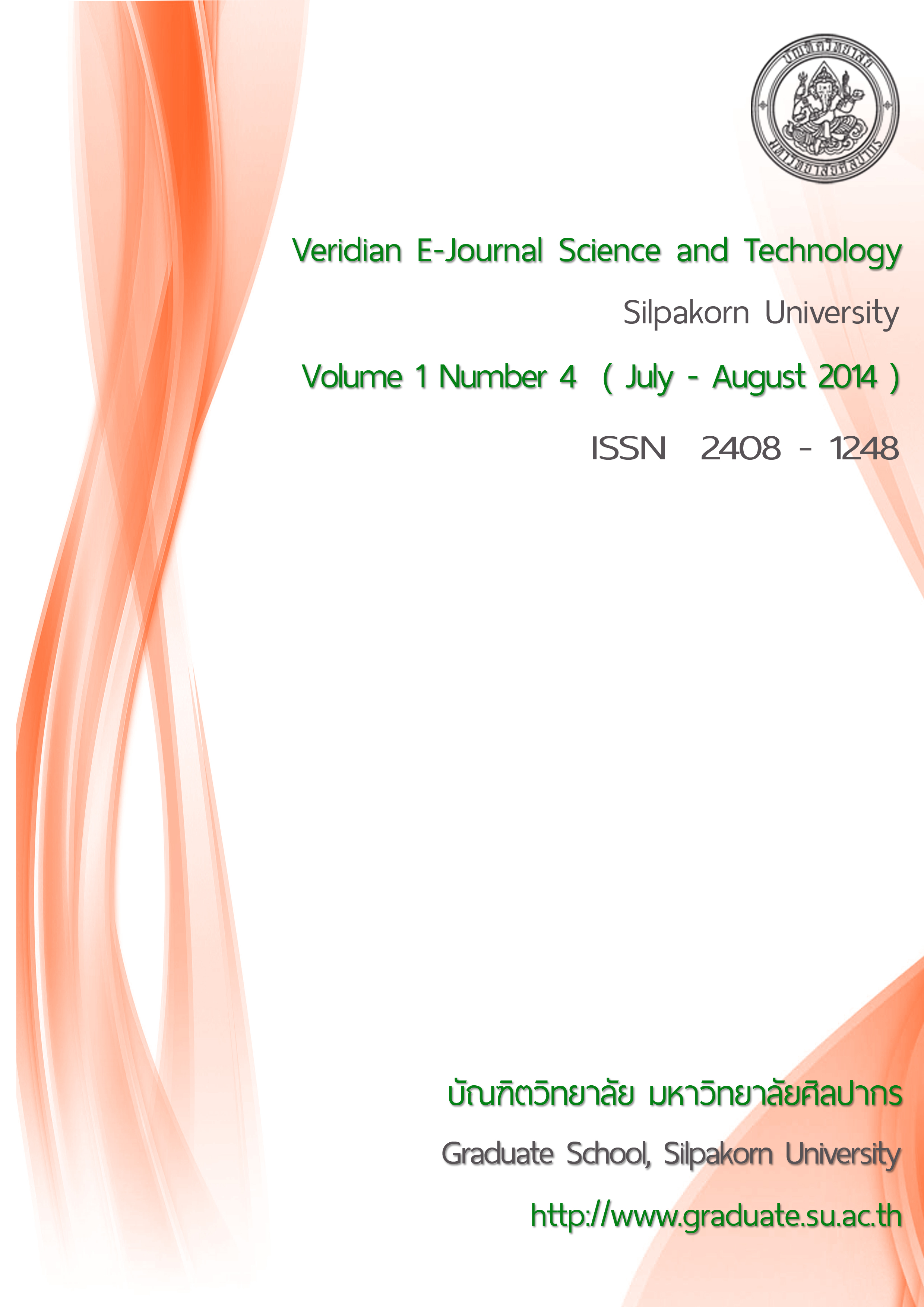การประเมินความเสี่ยงต่อสุขภาพจากการได้รับสัมผัสสารกลุ่ม BTEX จากเครื่องถ่ายเอกสาร
Main Article Content
Abstract
บทคัดย่อ
การศึกษาครั้งนี้มีวัตถุประสงค์เพื่อวิเคราะห์หาปริมาณสารกลุ่ม BTEX ที่ปล่อยจากเครื่องถ่ายเอกสารบริเวณใต้อาคารเรียนรวมวิทยาศาสตร์ ระหว่างช่วงการเรียนการสอนปกติและช่วงการสอบปลายภาคการศึกษา และนำผลที่ได้ไปประเมินความเสี่ยงต่อสุขภาพ นอกจากนี้ ได้นำผลการประเมินความเสี่ยงต่อสุขภาพไปพิจารณาร่วมกับผลการตรวจวัดการระบายอากาศภายในร้านถ่ายเอกสารและแบบสอบถามด้านสุขภาพว่าสัมพันธ์กันหรือมี ผลการศึกษาระดับสารกลุ่ม BTEX ในร้านถ่ายเอกสาร แสดงให้ทราบว่า ความเข้มข้นของสารกลุ่ม BTEX ในช่วงการสอบสูงกว่าช่วงการเรียนการสอนปกติเล็กน้อย โดยพบว่าในช่วงการสอบมีการปลดปล่อยโทลูอีนเฉลี่ยเท่ากับ 30.2 ไมโครกรัม/ลูกบาศก์เมตรและในช่วงการเรียนการสอนปกติมีการปลดปล่อยโทลูอีนเฉลี่ยเท่ากับ 27.7 ไมโครกรัม/ลูกบาศก์เมตร การวัดการระบายอากาศ พบว่า ความเร็วลมมีค่าอยู่ในช่วง 16.26-16.44 เมตร/นาที ซึ่งมากพอที่จะช่วยในการระบายสารมลพิษออกสู่ภายนอกร้านได้ นอกจากนี้ ผลการประเมินความเสี่ยงต่อสุขภาพจากการได้รับสัมผัสสารกลุ่ม BTEX ในช่วงการเรียนการสอนปกติและช่วงการสอบ แสดงให้ทราบว่า พนักงานร้านถ่ายเอกสาร มีความเสี่ยงต่อการก่อมะเร็งจากการหายใจเท่ากับ 3.42 และ 0.46 คนต่อล้านคน ตามลำดับ ส่วนความเสี่ยงต่อการไม่ก่อมะเร็งพบว่าไม่มีความเสี่ยง เนื่องจากมีค่า Hazard Index เท่ากับ 0.02 และ 0.003 ตามลำดับ ซึ่งมีค่าน้อยกว่า 1 ผลสำรวจความคิดเห็นเกี่ยวกับสุขภาพจากการทำงานในร้านถ่ายเอกสาร พบว่า ผลการประเมินความเสี่ยงต่อการไม่ก่อมะเร็งของพนักงานไม่สอดคล้องกับผลที่ระบุถึงการแสดงอาการต่างๆ เช่น ระคายเคืองผิวหนัง ไอ จาม ระคายคอ ปวดศีรษะ เป็นต้น ซึ่งอาการเหล่านี้อาจมีสาเหตุมาจากปัจจัยแวดล้อมอื่นๆได้
Abstract
This study aims to investigate the BTEX levels emitted from photocopiers in the copy center located under Faculty of Science’s classroom building. Samples were collected during the regular class and the final exam periods. Levels of BTEX analyzed, together with air ventilation data and health-related questionnaires, were used for health risk assessment which could be used as a guideline for BTEX-exposure preventions at sources, pathways and receptors. Results show that the levels of BTEX during the exam period were a little higher than that of the regular class period. Moreover, toluene was found as the predominant compound with concentrations of 30.2 mg/m3 and 2.8 mg/m3 for the exam and the regular class periods, respectively. Ventilation data indicate that air velocity inside the copy center, which was between 16.26 and 16.44 m/min, was high enough to bring indoor air pollutants out of the room. Results of health risk assessment illustrate that the estimated inhalation cancer risks were 3.42x10-6 and 0.46x10-6 for the regular class and the exam periods, respectively. The cancer risk levels are lower than the US EPA acceptable risk level of 1.0x10-4. With respect to non-cancer risk, levels of Hazard Index were found to be 0.02 and 0.003, respectively, all lower than 1. In additions, results from questionnaires indicate that there was no association between non-cancer risk assessment and health problems such as skin irritation, coughing, sneezing, throat irritation, and headaches, because these health problems may be linked to other environmental factors.
